by Deborah Abernethy and Mike McLeod
$1,125 (12 bidders, 18 bids): Victorian Austrian Solid Silver Baby’s Rattle/Whistle/Teether/Comforter.
This antique Victorian baby’s silver rattle/whistle/teether measures 145mm (5.75 inches) long and weighs 62 grams. It is unmarked as far as I can see and tests as silver. It is certainly continental in origin, and my best guess would be Austrian with the well-detailed engine turning and cast supports for the bells. It is in good antique condition with a tooth or claw teether, a working whistle and four original bells and no repairs.
A note from the seller after the sale: This is actually about 100 years earlier than I thought it was, dating to around 1720, and German in origin. Although unmarked, apparently this style of decoration is very distinctive of the period and region. I suppose it just goes to show that it is not always the clearly hallmarked examples that are the most desirable.
(Photo: eBay seller murrykin)
$1,675 (4 bids, 3 bidders): Antique Silverplate Ear Trumpet used by King George lV (ca. 1800s).
This Georgian silver gilt ear trumpet was used by King George IV and was first sold at Osborne House after the death of Queen Victoria. Marshall Field and Co. had an antique silver collection of which this item was a part. Whether they acquired it directly as buyers from Osborne House, I do not know. Ultimately, it came to Zenith Radio Corp/Hearing Aid Division in Chicago. They kept a small private museum of hearing devices.
The trumpet telescopes from 6 1/2 inches out to 12 inches. Engraved around the outer bell of the horn it says, “F.C. Rein & son sole manufacturers and only makers 30 Charing Cross Rd. London W.C. late 108.strand.” The thin strip between the words “only makers 30 Charing Cross rd the silver plate” has worn. The only other flaw is a small indentation partway up the horn. The instrument is ornately engraved.
(Photo: eBay seller peridot4me)
$4,015 (16 bids, 4 bidders): Rare Large Antique Batchelder Arts & Crafts Catalina California Peacock Tile.
Antique Arts & Crafts Era California Pottery Batchelder Large Peacock Tile. In good condition with a couple chips and some paint loss. Very hard to find item. There is one in the Pasadena Museum of History. That’s the only other example I can find of this item. Measures about 26 inches wide by 22 1/2 inches tall. It is stamped on the bottom with batchelder’s name. This tile weighs 45 pounds.
(Photo: eBay seller anothermanstreasure11)
The style he used and the twice-fired glaze which sealed in the color were distinctive. He used peacocks in many of his designs. At the height of his tile success, he had a company employing more than 150 people. The Great Depression changed this, but he continued to make pottery in a small shop until the early 1950s.
This is a find, and the rarity of the object is why it sold for so much money. I cannot imagine that this would not increase in value as time goes by.
$710 (26 bids, 9 bidders): Early 19th c. Gold Gilt Empire Bronze Mantel Clock Spanish Explorer.
On either side of the 4-inch wide by 10 1/2-inch long rectangular base is a crest with the initial “H.” After searching the internet, we believe that the 16th century explorer depicted on this bronze clock is Hernando de Soto (1495-1542). He was a Spanish explorer and conquistador who explored deep into the United States and actually crossed the Mississippi River. Constructed from gold gilded bronze, the statue measures 10 inches tall. On the stand holding the 3 3/8-inch diameter clock face is his hat and a map. At the bottom of the base is a detailed vignette of two Spanish Conquistadors. There is chipping around both key holes on the porcelain face. This face is marked “Wouters a` Anvers.” Both springs are wound tight, and this clock is missing its pendulum and does not work. Also, the sword which was attached to his hip near his cape is broken right where the screw would go. There are no restorations to this 13 3/4-inch tall, circa 1820s, French gilt bronze clock.
(Photo: eBay seller wwolst12)
Deborah Abernethy is a certified appraiser with the International Association of Appraisers. She can be contacted at 1-404-262-2131 or Deborah@expert-appraisers.com. Her website is www.expert-appraisers.com.


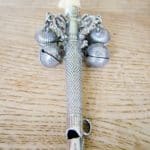

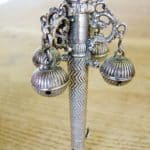


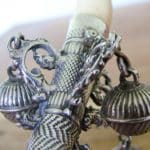

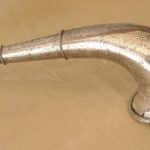
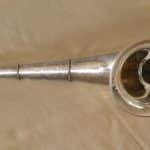
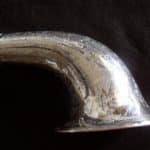
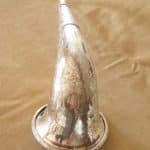
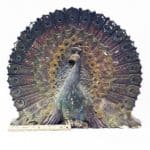
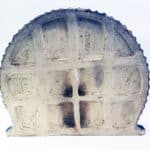





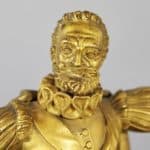
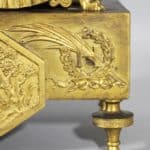



Related posts: